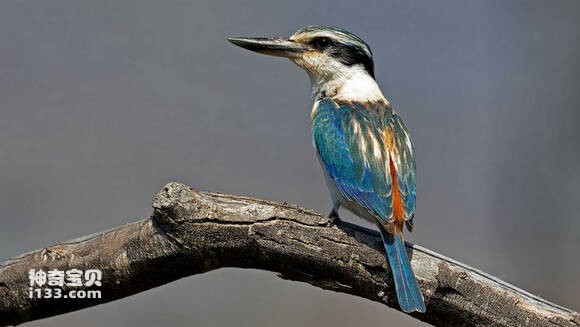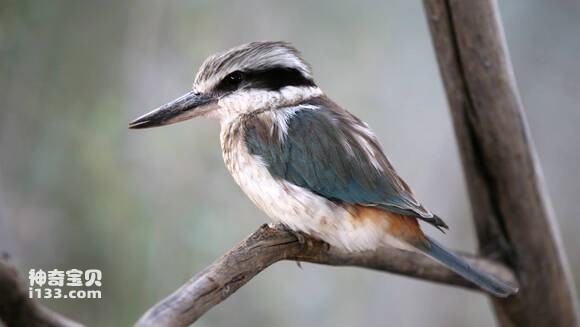Todirhamphus pyrrhopygia
IUCN
LCBasic Information
Scientific classification
- name:Todirhamphus pyrrhopygia
- Scientific Name:Todirhamphus pyrrhopygia,Red-backed Kingfisher
- Outline:Climbing birds
- Family:
Vital signs
- length:About 22 cm
- Weight:41-48g
- lifetime:No textual research information is available
Feature
The front is white, with green mottled striped cap, and the upper back is bright red from the waist to the tail
Distribution and Habitat
分布于澳大利亚和新西兰(包括澳大利亚、新西兰、塔斯马尼亚及其附近的岛屿。)
通常栖息于干旱或半干旱地区。也出现在桉树灌木区,吉布森沙漠,大维多利亚沙漠和距离新南威尔士州海岸100公里的地区。它的活动范围在澳大利亚各地,除西南部。
Appearance
The red back jade is 22 cm long, the female bird weighs 45-48g, and the male bird weighs 41-62g. This hunting kingfisher has a white front with a green mottled striped cap. The eyes have sketchy white eyebrows. The black band covers the eye first and reaches the neck. The back of the neck, cheeks, chin, throat and wings is a large white. The shoulder blades and upper back have a green tint, slightly darker near the collar. There are white stripes on some of the feathers on the back, giving the appearance of this area a horizontal stripe. The back of the upper body is bright red from the waist to the tail. The tail is light red yellow, with some feathers in the middle green, and the tail dark blue. The mouth is grayish black, and the mandibular Angle is partially colored. Legs olive gray.
The female differs from the male in the blue-green color of the wings and mottled gray or brown in the stripes of the forehead and crown. The collar is white. The young bird is generally similar in
Details
The Red-backed emerald, Todirhamphus pyrrhopygia, or red-backed Kingfisher, is a member of the Kingfisher family.

The red-backed emerald both settles and migrates in northern Australia from August to April, mainly in the winter on the Cape York Peninsula. September to March in the extreme south. The North-South Movement.

The red-backed emerald, like most game kingfishers, is entirely carnivorous. Often searching for prey in leaves or dirt. The main food is invertebrates such as spiders, centipedes, frogs, tadpoles. It also eats small vertebrates such as small fish, small snakes, lizards, mice, eggs, and baby birds.

The red-backed emerald nests on earth cliffs or river embankments, using their mouths to dig tunneled burrows for nests. These caves are generally bare of bedding. The eggs are laid directly on the nest ground. Lay 4 to 6 eggs. Spawning seasons vary depending on the area. In Queensland from September to February, in Western Australia from August to November, in South Australia from November and September, and in New South Wales from September to March.
Listed in the International Union for Conservation of Nature (IUCN) ver 3.1:2008 Red List of Birds.
Protect wild animals and eliminate wild meat.
Maintaining ecological balance is everyone's responsibility!








